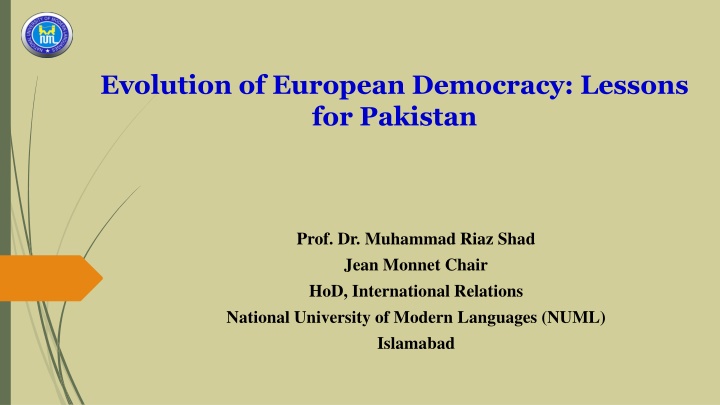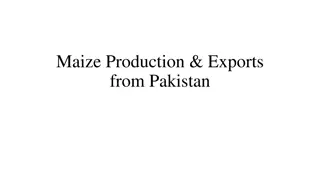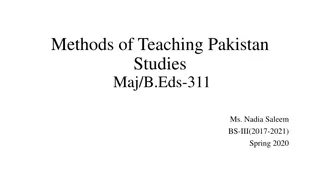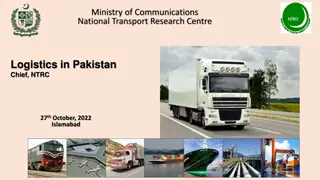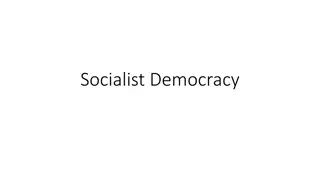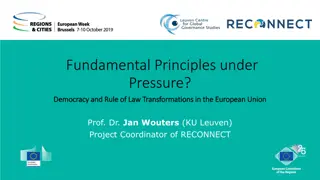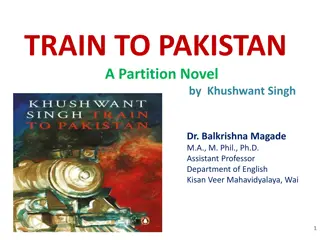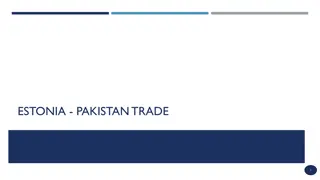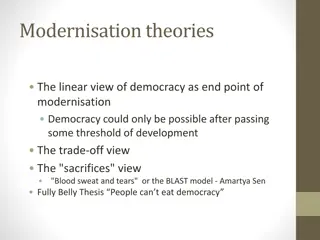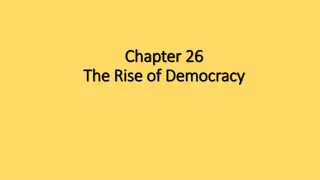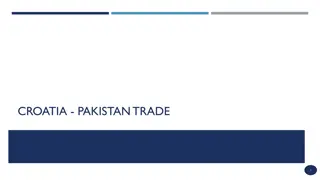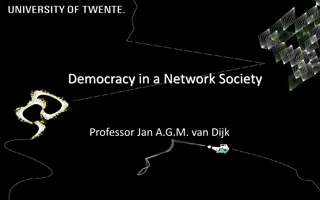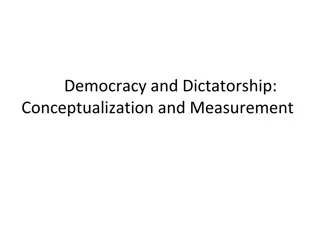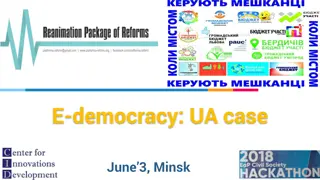Evolution of European Democracy: Lessons for Pakistan
This content delves into the evolution of democracy in Europe, drawing parallels to the challenges faced by Pakistan. It highlights issues with democracy in Pakistan, its performance and legitimacy, and explores the concept of liberal democracy, emphasizing principles such as popular sovereignty, citizenship, and constitutionalism.
Download Presentation

Please find below an Image/Link to download the presentation.
The content on the website is provided AS IS for your information and personal use only. It may not be sold, licensed, or shared on other websites without obtaining consent from the author.If you encounter any issues during the download, it is possible that the publisher has removed the file from their server.
You are allowed to download the files provided on this website for personal or commercial use, subject to the condition that they are used lawfully. All files are the property of their respective owners.
The content on the website is provided AS IS for your information and personal use only. It may not be sold, licensed, or shared on other websites without obtaining consent from the author.
E N D
Presentation Transcript
Evolution of European Democracy: Lessons for Pakistan Prof. Dr. Muhammad Riaz Shad Jean Monnet Chair HoD, International Relations National University of Modern Languages (NUML) Islamabad
Issues with Democracy in Pakistan Disruptive democratic process Lack of internal democracy in political parties Marginalized middle class & fragile civil society Population not aware about their constitutional rights and duties Democratic Associations labour, student, peasant bodies Free and fair elections Rule of law Chronic civil-military imbalance
Performance & Legitimacy of Democracy in Pakistan Not meant for people; power politics; fight over re- distribution of power and resources. Weak/extractive institutions Majority of population lives in poverty, illiteracy and lawlessness Poor social services Patronage rather than representation Electoral rather liberal democracy The three Ps of inequality: Power, People, and Policy,
What is Liberal Democracy? Four concepts/principles associated democracy: Republican Principle popular sovereignty; people as source of legitimacy Democratic principle equal and inclusive citizenship; majoritarianism Constitutionalism enduring structure of formal institutional power Horizontal structure (separation of powers - checks & balances); Vertical structure (Federalism - national & regional competences)
What is Liberal Democracy? Liberalism constitutional rights and liberties for citizens. Liberty of ancients vs. liberty of moderns direct participation in selection of representatives self-government through free & fair elections Peaceful enjoyment of individual independence in large sphere of non- political life economic, social, cultural and religious that people want to conduct on their own. Recognizing and protecting certain unalienable rights of people by a state/government
What is Liberal Democracy? Liberal Democracy Political order that rests on republican principle, takes constitutional form, and incorporates civic egalitarianism and majoritarian principle of democracy.
Lessons from Europe People centric policies and institutions Respect for majoritarian rule; inclusive rights and opportunities Constitutional conduct rather than power politics; strong democratic institutions Conducive environment for individual rights and opportunities
Thank You Thank You
